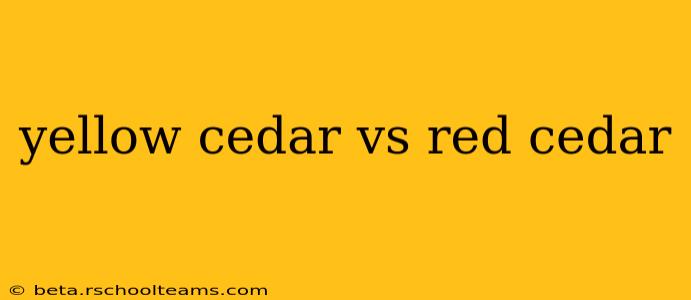Choosing the right wood for your project can be a daunting task, especially when faced with similar-sounding options like yellow cedar and red cedar. While both are prized for their durability and beauty, they possess distinct characteristics that make them suitable for different applications. This comprehensive guide will delve into the key differences between yellow cedar and red cedar, helping you make an informed decision.
What is Yellow Cedar?
Yellow cedar ( Chamaecyparis nootkatensis) is a species of conifer native to the coastal regions of northwestern North America. Its heartwood boasts a striking golden-yellow hue, hence the name, often darkening with age to a rich, amber tone. This beautiful coloration is a major draw for its use in interior and exterior projects.
What is Red Cedar?
Red cedar is a broader term encompassing several species, most commonly referring to Eastern Red Cedar (Juniperus virginiana) in the eastern United States and Western Red Cedar (Thuja plicata) in the western regions. Western Red Cedar is often what's implied when simply “red cedar” is mentioned in construction and woodworking contexts. Its heartwood displays varying shades of reddish-brown, ranging from light pink to deep red.
Yellow Cedar vs. Red Cedar: Key Differences
Several key factors distinguish yellow cedar from red cedar, impacting their suitability for various purposes:
Durability and Rot Resistance
Yellow Cedar: Possesses exceptionally high natural resistance to decay and insect infestation. Its inherent durability makes it ideal for exterior applications, including siding, decking, and boat building.
Red Cedar (Western): Also exhibits excellent rot resistance, though generally considered slightly less durable than yellow cedar in extremely harsh conditions. Its resistance to rot and insects is still highly valued, making it popular for siding, fencing, and outdoor furniture.
Appearance and Grain
Yellow Cedar: Features a fine, straight grain with a distinctive, lustrous sheen. The golden-yellow heartwood is visually striking, enhancing its use in both rustic and contemporary designs.
Red Cedar (Western): Typically shows a more pronounced grain pattern, sometimes exhibiting a slightly coarser texture. The reddish-brown hue varies depending on the tree’s age and location, contributing to its versatility in aesthetic applications.
Workability and Strength
Yellow Cedar: Moderately easy to work with hand and power tools, although its denser heartwood can require sharper blades. It possesses good strength properties, suitable for structural elements in some applications.
Red Cedar (Western): Relatively easy to work with, making it a popular choice for both professional and amateur woodworkers. It offers moderate strength, suitable for many applications, but not as strong as some hardwood species.
Cost
Both yellow cedar and red cedar are considered premium lumber options, generally more expensive than standard softwoods like pine or fir. The exact cost varies depending on factors like grade, availability, and market demand. Yellow cedar tends to be priced slightly higher due to its exceptional durability and unique appearance.
Uses
Yellow Cedar: Ideal for exterior applications needing extreme durability:
- Siding
- Decking
- Boat building
- Fencing
- Outdoor furniture
Red Cedar (Western): Suitable for a wide range of uses, both interior and exterior:
- Siding
- Shingles
- Siding
- Interior paneling
- Furniture
- Craftwork
What are the benefits of using yellow cedar?
Yellow cedar's outstanding benefits lie in its exceptional durability and striking golden hue. Its resistance to rot and insect damage makes it perfect for long-lasting exterior projects. The beautiful color adds a unique aesthetic appeal to any project.
What are the benefits of using red cedar?
Red cedar offers a compelling blend of beauty and durability. Its rot resistance and ease of working make it a versatile choice for a broad range of applications, while its attractive reddish tones enhance many interior and exterior designs.
Which type of cedar is better for outdoor use?
While both are excellent for outdoor use, yellow cedar generally holds a slight edge due to its superior rot resistance. However, Western Red Cedar offers excellent performance and is a perfectly viable option for most outdoor projects. The choice often comes down to budget and aesthetic preferences.
Which type of cedar is better for indoor use?
Both types are suitable for indoor applications. The choice often depends on personal preferences for color and grain pattern. Western red cedar's ease of working makes it popular for intricate indoor projects.
This detailed comparison should equip you to choose between yellow cedar and red cedar based on your specific needs and preferences. Remember to consider factors like cost, durability, appearance, and the intended use of the wood before making your final decision.
